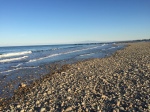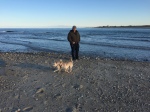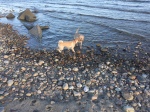--Originally published at #t509massive on Twitter
Other articles are archived at order-essays.com
chrisbuttimer: Computrs r now commonplace n th classroom but teachng practices oftn look similar as do learnng outcomes
Other articles are archived at order-essays.com
chrisbuttimer: Computrs r now commonplace n th classroom but teachng practices oftn look similar as do learnng outcomes
--Originally published at #t509massive on Twitter
--Originally published at My Life at Harvard
Now that my semester is just about over and my projects are essentially done, I’ve been taking advantage of the extra free time to explore my surroundings. That is one thing I wish I did in my undergrad years. I figured while I’m here, I might as well explore what the east coast has to offer.
Today we took a mini day trip to Cape Cod. Our original plan was to go all the way to Provincetown but then we decided on a random city called Sandwich. We headed out later than we planned on, and realized that the sun would be setting by the time we got to Provincetown.
It was a little tough at first trying to find a beach that didn’t having a ridiculous parking fee. ($15 for a day?! No, thank you.) We drove around aimlessly for a bit and ended up finding one kind of tucked away that had free parking.
We had to cross this bridge to get to the beach and Walter was terrified. I had no idea he was so scared of bridges/heights. He planted himself down and wouldn’t budge, and we ended up having to carry him.
The beach itself was a little cold but I didn’t mind. It was less crowded. It was also nice to see a different landscape. I was also surprised to see that Gordie and Walter were jumping and running in the water. My brother FaceTimed me and he was also at the beach in Pacifica. We thought it was hilarious that we were both at the beach at the same time, albeit on opposite sides of the country.












My youngest brother is coming to visit this week, and I’m really excited to explore Massachusetts further and show him around. One of the places we’re exploring is the New England Aquarium. The Boston Public Library has a free museum pass program and I was able to reserve a pass for one of the days he’s here.
On that note, there probably won’t be as much academic content on this blog for the next month or so. All my fall courses ended last week, and other than a project presentation this week and turning in some final papers, I’m pretty much done until I start my winter session in January.
I do plan on updating this blog about my winter adventures, though!
--Originally published at Greg H.
The role of instructional design in improving public health outcomes.
In many settings, an instructional designer’s assumptions are probably not all that different from the colleagues with whom he/she most frequently collaborates.
Consider the role of an instructional designer in a university setting. The designer’s assumptions about, say, good pedagogy, are probably not all that dissimilar from those of the professors with whom he/she most closely works.
But what happens when instructional design is applied in other domains—especially those fields with fairly high-stakes implications, such as public health?
I recently spoke to Karina Lin, an HGSE alumna and Instructional Designer at Education Development Center (EDC), an educational nonprofit that collaborates with public and private partners to design, implement, and evaluate educational programs.
Karina shared her experiences working with an EDC team tasked with assisting the New York City Department of Health and Center for Disease Control (CDC) with their efforts in creating an online platform to help community organizations build their capacity in working with HIV/AIDS patients.
Given the importance of this project, Karina and her EDC team were fortunate to have a proven and reliable model from which to work: New York City Department of Health’s 2013 Care Coordination Workbook, which provides HIV/AIDs patients with an overview of the disease, and also discusses treatment regimens in an accessible, easy-to-understand way.
With NYC supplying the content expertise, EDC would then provide instructional design support to translate the model into an online format. The CDC would be engaged to oversee the project and spearhead the dissemination of all of this work to a much broader audience.
The roles were clear. And that was the challenge.
One challenge Karina and her team experienced was sharing their ID process with public health professionals.
Steeped in a very different sort of professional training, public health practitioners were initially a little confused by things like mock-ups and wireframes.
“When we first gave them the wireframes, they were confused by the design. They said, ‘Where’s the color?’ and couldn’t focus on the content because they were looking for a well-polished website.”
Karina’s team realized they needed to bring more clarity to their ID process and give the public health experts an overview of their workflow, discussing how wireframes could enable the health experts to focus more on providing valuable feedback on content.
This made the process much more fluid. The content experts not only gained a better understanding of the design process, but also developed a sense of trust in the instructional designers’ choices.
Another challenge Karina and her team experienced was ensuring that their portions of the project were as useful to community organizations as possible.
“We stayed true to the audience we were trying to serve by bringing in people from the field to consult with us on specific tools. For example, we created an online tool on how to supervise staff in an HIV clinic, where staff turnaround is really high from burnout, and we brought in two amazing program directors to tell us what they do.”
Karina said EDC also conducted a thorough ethnographic assessment of the project’s audience. “We interviewed them, assessed their needs, and asked them what they really wanted out of the potential resources they could be provided.”
While an instructional designer might feel right at home producing, say, a massive open online course, his/her professional training may present certain challenges when working with experts from other fields. And though navigating these relationships can be tricky, the upside potential is enormous, particularly when instructional design goes beyond the university’s gates into fields such as public health.
--Originally published at My Life at Harvard
Classes are over, final projects are winding down, and the holidays are upon us. I can’t believe how quickly time has passed.
Holidays can get a little lonely when you’re used to huge family gatherings. It’s simply not within our budget to fly home for the holidays. Also, it’s hard to travel with pets and find sitters. So, needless to say, this is our first time celebrating the holidays on our own.
I’m very grateful for the community and camaraderie I’ve encountered at HGSE. Even though we’re far from home, we’ve been able to get together with friends and feel like we’re with family.
Today was our first Friendsgiving, and it was amazing. Pretty much everything was made from scratch and quite delicious. It was our friends’ first Thanksgiving and first time hosting, and I’d say it was a success.
(I would have taken more pictures of the food but I was eager to eat it.)
When we drove home, it started snowing. We were reflecting on how crazy it is that we are here. It still feels very surreal.
I’m thankful for our family back home, but also for the family I’ve found here. I’m thankful to be with someone who supports me and my crazy dreams, and doesn’t think twice about leaving everything we know in search of a grand adventure. Even more important, that he doesn’t think twice about staying when things don’t go as planned. I’m thankful for my fuzzbutts as well, even if they sometimes chew up my favorite things. I’m grateful to be alive and to be able to have these experiences.
(that’s not a pimple on his nose, by the way! I’m not sure what that is because there’s nothing on his nose!)

Hope you all had happy holidays as well!
(My brother got me this awesome cat sweater and I love it.)
--Originally published at Adventures in Learning
“I believe that the motion picture is destined to revolutionize our educational system and that in a few years it will supplant largely, if not entirely, the use of textbooks…The education of the future, as I see it, will be conducted through the medium of the motion picture…”
—Thomas Edison, 1922
They say a picture is worth a thousand words, but what if those were moving pictures, accompanied by dialogue and set to music? What would they be worth then? To me, the right film is priceless.
I have always had a love for the television and film, but due to logistical restrictions–before there was iMovie and YouTube– I sought solace in writing fiction, ever since I was teenager. It was and continues to be a great form of self-expression and entertainment–not to mention practical for my work.
I have also gained an appreciation for film as a source of education as well. As a self-proclaimed documentary buff, I find myself gravitating towards them on Netflix and try to attend screenings whenever possible. I like to consider documentaries high brow reality television, and became enticed after Michael Moore gained mainstream fame. One particular documentary that left a profoundly lasting impression on me Oscar® winning director Alex Gibney’s Park Avenue (2012), which itself won a Peabody Award. Park Avenue explores the juxtaposition of the iconic New York street, which few know actually runs the length of most of the City. In fact, far from the glitz and affluence of millionaires in penthouses on the Upper East Side are those awaiting public assistance from a food pantry in South Bronx across the Harlem River. The film is readily available on Netflix and WGBH PBS. The entire documentary also available on YouTube. Next up for Mr. Gibney is a controversial documentary involving The Church of Scientology.
On a lighter note, a couple of other great non-education offerings on Netflix, though much can be learned from them, are Bill Cunningham New York (2010), which follows the life of the famed New York Times fashion photographer as he makes his way about the Big Apple on his bicycle, snapping ordinary folk who have a unique flare for fashion, and The September Issue, which chronicles the laborious process of publishing Vogue‘s nearly 5-lb. September issue, considered by many to be fashion’s Bible. If you are a fan (or not) of maven and front-row regular, Anna Wintour (hello…The Devil Wears Prada meme), this might intrigue you. If anything, it’s merits exceed farther than just fashion.
Two education-related documentaries of interest are also A Tale of Two Schools (2003) and Davis Guggenheim’s TEACH, which was released a decade later. I highly recommend both. If you have further interests in education with a twist, Maestra (2012), a film about women who risked it all to bring literacy to their fellow citizens in Cuba, might be worth a look as well as American Teacher (2011), which was produced by Harvard Graduate School of Education alum Ninive Calegari and narrated by actor and Cambridge native, Matt Damon.
Recently at HGSE, three new documentaries were on the docket: Maker, which explores learning beyond the classroom through design spaces and the “maker” movement; The Last Mountain, a moving environmental conservation film sponsored by the Harvard Green Team; and The Ivory Tower, which explore the issue of education value and student debt. If you interested in MOOCs, Ivory Tower is definitely worth a viewing. It was a great privilege to discuss the film afterwards at a local restaurant with one of the film’s producers, Eric Grunebaum, and HGSE faculty, Tina Groetzer. Mr. Grunebaum worked with attorney and advocate Robert F. Kennedy, Jr., who made regular appearances in the film, and is himself is President of a water conservation non-profit called The Waterkeeper Alliance.
Still on my Netflix wishlist to (finish) is Side by Side (2012), a documentary which contemplates the evolution of film-making from the use of photochemical film to digital media. A jaw-dropping ensemble cast of directors, including James Cameron, Martin Scorsese, David Fincher, and George Lucas, is interviewed on the trade-offs and complexities of decisions directors face as the film making process is being revolutionized in the 21 century.
I aspire to expand the borders of the classroom to encompass the realities of our world, helping students make connections from their coursework to their daily lives by appreciating the links between science and current events, public policy, and even economics. I hope to give them the autonomy to be free thinkers and make better sense of the world around them, and in turn, become better contributors to their communities and fields of practice. I feel that story telling through the medium of film possesses a great power to persuade and inspire a call to action. While films discussed in this post vary in context, most share a constructive viewpoint about evoking change in the world or at least being open to its possibilities.
I have been particularly moved by this genre of film, and the motion picture, itself. One day I hope to produce my own documentary. Hopefully someone will see it, and it will be as meaningful an experience as these films were to me.
--Originally published at #t509massive on Twitter
--Originally published at To piggyback on the last point...
Last week: “The Russian government has announced it will create a “regional electronic encyclopedia” to serve as a counterweight to Wikipedia.” (Washington Post, Nov. 17)
The Kremlin’s recent whack-a-mole style attempts to stamp down on Wikipedia are familiar, in terms of power and information, but somehow still especially strange. Also strange are the bizarre-o minor edits on Wikipedia pages that have been traced to the Russian Government.
For example:
Other examples are even more absurd. After living in Russia for a year from 2012 to 2013, I feel like I experienced a much different Russian internet than the nationwide “CIA project” suggested in recent Kremlin murmurs. While I am sure my personal information was plenty up for grabs back then, as it would be now, the only sense I got of the internet there was that, much like anything else in the country, it was an open, renegade space. Copyright laws were only suggestions, and anything and everything could be found without restriction, and on the equivalent of Facebook (VKontakte), no less. Again, I am sure I was naiive to think that my internet usage went unobserved, and that I was operating in a big, free online world (not that I did anything beyond stream some movies), but the level of supervision that the Russian government seems ready to impose on the internet is surprising to me. Also, this rush for cyber control of citizens feels especially scary given the patchy world of law enforcement that operates over there.
Well, it’s been a wonderful journey thus far, hasn’t it?
a circle of excellent teachers and learners, thanks everyone for sharing your ideas and enthusiasm #t509massive pic.twitter.com/CJO7vuggG5
— doug pietrzak (@freshcognate) November 24, 2014
Thanks to everyone for an incredibly rewarding semester of class sessions and for a stimulating project Faire. From my conversations with you since, I know that many of you feel like your colleagues asked thought provoking questions and forced you to refine and clarify your thinking. I’m very sad that time didn’t allow me to personally visit with all of you, but I’m certainly willing to meet with anyone in the days ahead to discuss your work further.
You have two final tasks ahead. The first is to complete and submit your projects, along with a reflective essay. The second is to submit a reflective essay for your participation in our online networked community.
Logistically, both can be accomplished at the Canvas site. Scroll down to the bottom for the assignment submission spaces. Prompts for the project reflection and participation reflection are online.
I want to share one further piece of advice. In discussing projects with many of you, I’ve frequently found myself recommending a kind of “three-part” structure for projects, especially those of you that built a thing. The first part is an “Executive Summary” of some kind. This short document/post would briefly set out the context for the project and then highlight the most important insights. The second would be the main media or document component– the research, the slides, the course, the presentation materials, etc. The final piece would be a longer document that explains the work more holistically– provides more background on develop, on methods, and ultimately details the most important findings from the work. That structure isn’t the right answer for every project, but I keep coming back to it.
Part of the point of that structure is to give people a short hook into your work, one that both summarizes the project and highlights the most important findings. Then present the project itself. Then, if someone says, “wow, this is awesome, how do I learn more,” there is a longer document providing more background.
The other thrust of my feedback to folks has been to pause and reflect on the key insights from your work. Many of you are still in the weeds of your thinking, focused on details and particular pieces. As you figure out how to communicate your final project, I’d encourage you to ensure that the most important insights from your design or research are stated clearly and boldly.
If you have any questions, please let me know. Otherwise, have a wonderful holiday break and good luck wrapping up your work across your courses.
Best,
Justin
--Originally published at EdTech Researcher